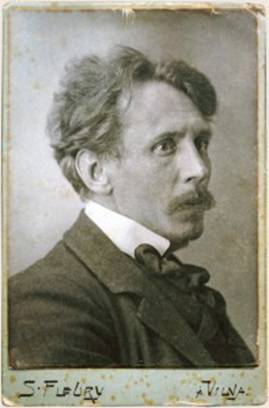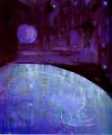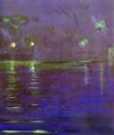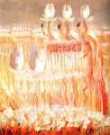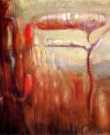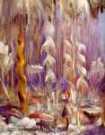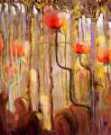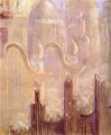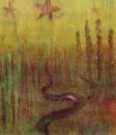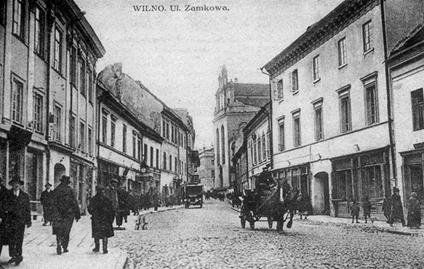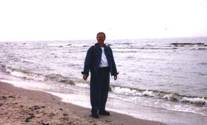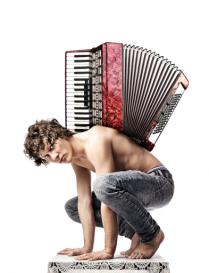
THE VOICE OF INTERNATIONAL LITHUANIA
|
VilNews has its own Google archive! Type a word in the above search box to find any article.
You can also follow us on Facebook. We have two different pages. Click to open and join.
|
Tue, 11th September, 2012 - Posted by - (8) Comment
Oh, those old Lithuanian
wedding traditions
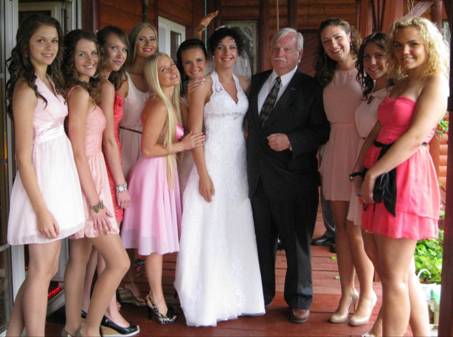
The article author, Kestutis Eidukonis, with the bride and her maids.
Marriage and death - these are the events to which ancient Lithuanian culture gave special attention to, and judging by the surviving customs and folklore, the most significant of these was the wedding, for it was on the family that the entire community depended on for survival, structure, and stability - not only of the community but of the whole nation. It is therefore understandable why the creation of a family - a wedding- receives so much attention in both ancient and present day Lithuanian culture.
- Bookmark :
- Digg
- del.icio.us
- Stumbleupon
- Redit it
Sat, 7th July, 2012 - Posted by - (1) Comment
A new film, Land Of Songs, will show the Lithunian dainos (songs) as living, breathing stories, deeply rooted in their natural surroundings, daily routines, and rich histories.
Močiutės dainos
Land of Songs Director Aldona Watts with the močiutės: Stasė Bogušienė,
Jonė Dvareckienė, Marytė Klimavičienė, and Pranė Barysienė.
Hello and Sveiki!
My name is Aldona. I’m a Lithuanian-American multimedia producer from San Francisco, living and working in Brooklyn. This project has been a dream of mine for so long now that I’m thrilled to finally make it happen!
It all began seven years ago. My family and I visited Lithuanian friends in the village of Puvočiai, and they invited their neighbors, the močiutės (or "little grandmas"), over to sing for us. These močiutės, they told us, were the last generation in a long line of traditional folk singers with ancient roots.
At twilight we laid tables under the trees with food and drink. I barely noticed the faint sound of voices weaving through the forest, until they mounted to a loud front of song. And then I saw them: a small herd of hunched figures making their way towards us, their white headscarves bobbing through the trees.
The songs were at once melancholy and joyful; the hauntingly beautiful harmonies seemed from another world. After each song, the women’s wrinkled faces cracked into wide smiles, and the ghostly echo of the voices ringing through the trees was replaced by raucous cackling.
When it was time to say goodbye, the močiutės left as they came, singing all the way. Long after they disappeared, their voices remained.
- Bookmark :
- Digg
- del.icio.us
- Stumbleupon
- Redit it
Sat, 7th July, 2012 - Posted by - (1) Comment
By the end of the book, author Daiva Markelis discovers
Her own way to be both
Lithuanian and American.
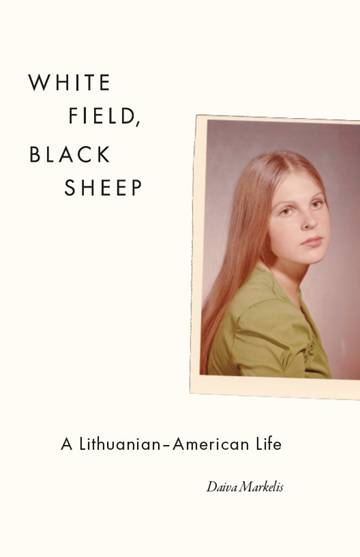
Daiva Markelis interviewed by Ellen Cassedy
Daiva Markelis's memoir, White Field, Black Sheep: A Lithuanian-American Life (University of Chicago Press, 2010), tells the story of her growing up as the daughter of postwar Lithuanian immigrants in the 1960's and '70's near Chicago.
The book alternates between the story of Markelis's youth – especially her struggle for cultural identity – and a series of touching later scenes with her octogenarian mother.
We see Daiva and her sister begging for real American Halloween costumes and a plastic Christmas tree, while the parents insist on speaking Lithuanian and holding true to their traditions. The descriptions of Catholic school, Lithuanian scout camp, and the family resort owned by Valdas Adamkus (who later returned to Lithuania and became its president) are tart and funny.
Markelis reveals a culture as well as a personal history. She writes affectionately about the streets, the buildings, even the tackiest billboards of her home town - while, at the same time, not shrinking from frank portrayals of racial tension and alcohol abuse. The portraits of her parents are filled with a lovely tenderness, even as she pokes fun and reveals some of their failings.
This tale of seeking cultural identity within an immigrant community comes to an uplifting conclusion. By the end of the book, Markelis has discovered her own way to be both Lithuanian and American.
- Bookmark :
- Digg
- del.icio.us
- Stumbleupon
- Redit it
Sat, 23rd June, 2012 - Posted by - (0) Comment
Letter from our VilNews’ Washington correspondent:

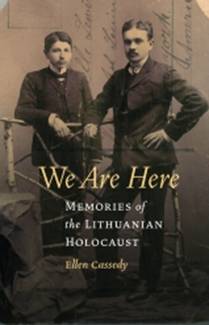
It was a pleasure meeting readers, librarians, booksellers, bloggers, and publishers’ reps at BookExpo America in New York City last week. I was honored to be among the 700+ authors signing books at the largest book trade gathering in the U.S. Here I am with Donna Shear, director of the University of Nebraska Press, my wonderful publisher.
A special treat was seeing Susan Nussbaum accept the Bellwether Prize for social engaged fiction from Barbara Kingsolver. Another highlight was visiting the Read Russia booth to chat about a possible Russian translation of We Are Here. And then there was the once-in-a-lifetime chance to pose with Olivia the Pig.
For more details, visit my website. Mark your calendar – we’d love to see you there!
Praise for We Are Here
“Pioneering… will reach out to Jews, Lithuanians, and all those who care about not replaying in this new century the disasters of the century that has just ended"
Michael Steinlauf
“…deeply moving…her book offers a unique perspective…complex human texture, rooted in an oft-forgotten Yiddish cultural context, a tapestry of events which elsewhere too often appear as one-dimensional. Readers will doubtless be immensely enriched by her experience.”
Dr. Saulius Suziedelis…
- Bookmark :
- Digg
- del.icio.us
- Stumbleupon
- Redit it
Wed, 6th June, 2012 - Posted by - (0) Comment
Ars longa, vita brevis
Art is long, Life is short.
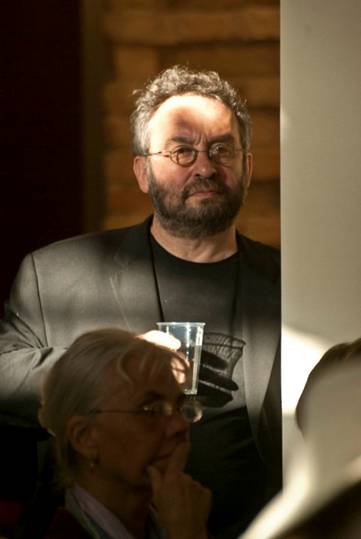
Professor of Creative Writing and American Short Story at Concordia University, Canada,
the founder and main organizer of the SLS, and author Mikhail Iossel.
Photo: Kestutis Pleita
Professor Mikhail Iossel interviewed by Eglė Kačkutė
This summer, July 15-28 and August 29-12, the 14th edition of Summer Literary Festivals known as the SLS will be held in Vilnius for the 3rd time running. Literary workshops will be conducted by experienced and well known North American writers; famous photographers, artists and researchers will be taking part in the program. SLS is the biggest independent creative writing program in the world that brings together an impressive number of talented teachers and writers to be. The creative writing phenomenon is rife in Europe, too. The first British Creative Writing course graduate in the UK is legendary Ian McEwan who continues to reap the plentiful fruit of his studies at East Anglia University thirty odd years ago. Creative studies are known to be more that just a means to get better at writing, they also serve as an initiation into complex and competitive world of publishing, providing writers to be with much needed references.
Eglė Kačkutė is talking to professor of Creative Writing and American Short Story at Concordia University, Canada, the founder and main organizer of the SLS, and author Mikhail Iossel.
- Bookmark :
- Digg
- del.icio.us
- Stumbleupon
- Redit it
Mon, 4th June, 2012 - Posted by - (0) Comment
The medals of
Petras Rimsa
Lithuanian medallic art is an especially interesting area of study in the numismatic hobby. Individual medals struck by various persons or groups convey the specifics of the history of Lithuania and its people.
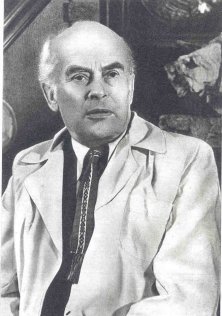
Petras Rimsa in 1957
By Frank Passic, Albion, Michigan
Lithuania’s most outstanding medalist was sculptor Petras Rimsa (1881-1961), a contemporary of Germany’s medalist Karl Goetz. Many of Rimsa’s designs reflect Lithuania’s patriotic themes and range from religious subject matter to sarcastic political commentary. Since the reestablishment of Lithuanian independence in the 1990s, Rimsa’s medals have again become popular and highly sought after by Lithuanian collectors. To meet the demand, there are even contemporary reproductions of Rimsa’s early 20th century medals.
- Bookmark :
- Digg
- del.icio.us
- Stumbleupon
- Redit it
U.S.-Nordic-Baltic cooperation
Fri, 25th May, 2012 - Posted by - (28) Comment

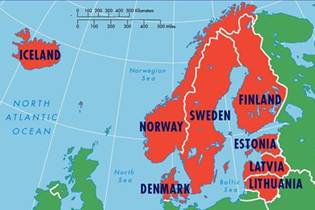
By Dr. Stasys Backaitis
 Conference on U.S.-Nordic-Baltic Cooperation:
Conference on U.S.-Nordic-Baltic Cooperation:Shaping the U.S.-European Agenda
The conference provided an overview by U.S. and European researchers and political experts on the importance, need and benefits of a close U.S. collaboration with the Nordic-Baltic region. The collaboration would facilitate building a wider and more secure Europe, reinforcing U.S. attention to transatlantic engagement, and achieving a more constructive dialog with Russia leading to democratization of its society. The conference took place on Friday, May 4, 2012, at The Paul H. Nitze School of Advanced International Studies of the John Hopkins University, Washington, D.C.
- Bookmark :
- Digg
- del.icio.us
- Stumbleupon
- Redit it
Wed, 23rd May, 2012 - Posted by - (2) Comment
 |
VilNews is in Azerbaijan
|
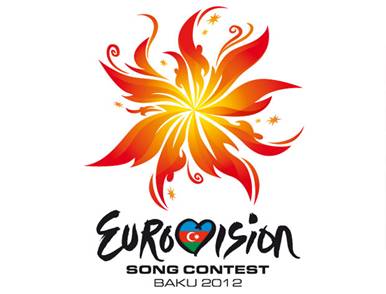
By Arvydas Arnasius
To tell frankly Azerbaijan was not on my list of countries which I wanted to go no matter what and when there was an opportunity to visit it during the 2012 Eurovision song contest in Baku I had a reserved expectations.
For the reader I can tell that Azerbaijan is neither Europe nor Asia and this country has an incredible tangle of contradictions and contrasts. It’s fascinating nexus of ancient historical empires going back centuries ago. Yet it’s also a new and dynamic nation finding its way from the emergencies from war-torn post-Soviet times on petroleum funded explosion of optimism. Surrounded by the semi-desert on the oil rich Caspian Sea, the nation’s cosmopolitan capital – Baku, is a dynamic boom-town, where flashy limousines and mushrooming skyscrapers sweep around the picturesque old town. Yet barely few hours’ drive away there is another reality - entirely different world: timeless villages with their people and soaring high Caucasus mountains.
- Bookmark :
- Digg
- del.icio.us
- Stumbleupon
- Redit it
Lithuania is a cultural treasure the world still knows far too little about
Thu, 22nd March, 2012 - Posted by - (3) Comment
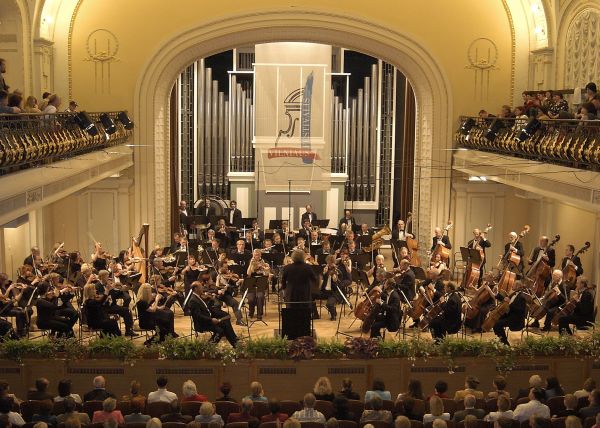
The Lithuania National Symphony Orchestra playing in the National Philharmonic Hall, Vilnius.
Conductor: Professor Juozas Domorkas. Photo: Michailo Raškovskio
Far too few people outside Lithuania know what a tremendous treasure of culture this country represents! Today Lithuanian art is not only flourishing at home but is also gaining recognition internationally. Though not every poster tells that a nightingale soprano, a graceful ballerina, or a divine cello player comes from Lithuania, the probability that you have just enjoyed a concert of a Lithuanian artist is great, whether it be New York, London, Berlin, or Vilnius.
Vilnius, a city with a population slightly more than half a million, is packed with art galleries and is full of posters inviting you to exhibitions, concerts and plays, both in traditional galleries and concert halls, but also in less traditional venues. The old town itself is like a spacious and cosy gallery of Baroque architecture.
And it is not only Vilnius that can boast of a rich cultural life. Nearly every bigger town has a professional theatre, concert hall and a tradition of regularly attending cultural events. Though the Lithuanian summer is short, the summer calendar is packed with festivals going on all around Lithuania.
For centuries Lithuania has been home to those of Slavic, Jewish, Karaite, and Prussian descent, along with those of other nations. This multiculturalism, along with the figurative expression in literature, theatre, cinema and fine arts, has become a hallmark of Lithuanian art. The link between history and the present is the feature pointed out most often by lovers of Lithuanian art in neighbouring European countries and more distant Asian countries...
- Bookmark :
- Digg
- del.icio.us
- Stumbleupon
- Redit it
Adomas Varnas – artist and banknote designer
Thu, 22nd March, 2012 - Posted by - (2) Comment
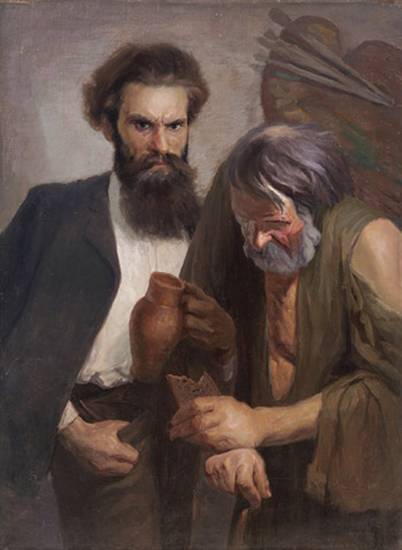
Adomas Varnas (1879-1979).
“Artist and beggar”, 1906-1908, oil on canvas, 115x80.
Čiurlionis National Art Museum
By Frank Passic, Albion, Michigan, USA
A few weeks ago in Vilnews there was an article about Lithuanian artist Adomas Varnas (1879-1979), which included an illustration of his 1953 masterpiece entitled “The Coronation of King Mindaugas.” Varnas’ lifespan far surpassed those of his counterparts, and his biography is extensive. Varnas was co-founder and the first president (1920) of the Association of Creative Artists, and helped organize Lithuanian art schools and galleries. He became well known for his collection of ethnographic material, particularly the wayside crosses. He also designed various Lithuanian stamps and banknotes.
Varnas escaped to the West during the summer of 1944, and in 1949 settled in Chicago, Illinois. Despite his old age, he remained active until the time of his death. He celebrated his upcoming 100th birthday on December 8, 1978 and was able to speak briefly at a banquet held in his honor in Chicago at the time.
In a bit of irony, the Lithuanian numismatist Dr. Aleksandras Rackus (1893-1965) wrote in 1949:
“Adomas Varnas, the famous Lithuanian artist…is coming to the U.S. He fled from the Bolsheviks in his old age and lived as a refugee in a D.P. camp in Germany. He is more than 70 years old and malnutrition made him physically weak. Stamp collectors undoubtedly will want his autograph and other favors, but they should remember that he won’t live very long, so try to reciprocate. At least buy from him a painting.”
Not only did Varnas live a long life of 100 years, he lived for more than thirty years after Rackus’ statement! Rackus died in 1965.
- Bookmark :
- Digg
- del.icio.us
- Stumbleupon
- Redit it
A weekend of books in Vilnius – once again
Wed, 22nd February, 2012 - Posted by - (1) Comment
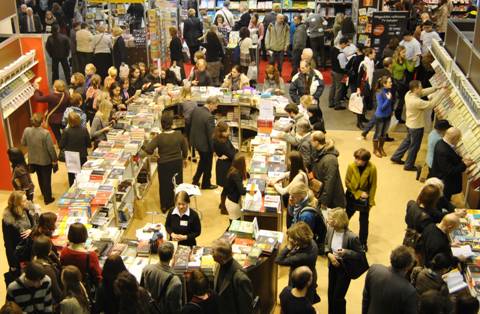
Text and photos: Diana Koval
An annual cultural refreshment weekend for all those who cannot imagine their life without books finally happened and as always it was fabulous. Vilnius International Book Fair for the 13th time opened its doors to the numerous visitors from all over the country. Last year there were about 60 thousands of them, and about the same amount of guests are expected to visit Litexpo exhibition center during this last weekend of February.
- Bookmark :
- Digg
- del.icio.us
- Stumbleupon
- Redit it
Vilnius wins with cozy atmosphere
Sun, 12th February, 2012 - Posted by - (0) Comment
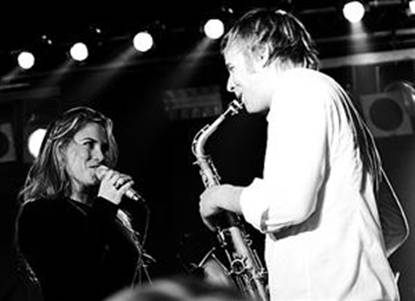
Recently old factory places were resourcefully adapted into clubs.
One of the most famous is "Loftas", where the Parov Stelar
Band (above) is among the many visiting artists.
Despite the clutter of local and international cultural happenings, openings, exhibitions and art workshops, when you think that 24 hours is too short to attend all events, Vilnius still has a nice and rich night life. Not only can you taste the best Japanese, Chinese, Indian and Mexican cuisines but you may enjoy gourmanic kitchens such as Argentinean, Italian, Spanish, Russian, Polynesian, Georgian, Armenian, Thai, German or French.
To try the "cepelinai" or "kugelis" of a Lithuanian national kitchen is a must. Since Lithuanian national dishes are quite heavy, digestive work can be done best by the local beer of big famous breweries or just tasty 'life' beer of the small local beer makers. If you prefer wine and jazz, Vilnius will invite you to lots of cozy wineries, whose numbers have lately grown 'as mushrooms after the rain'.
Not enough adventures? Go and shake your body in a night club! A few years ago, lots of Vilnius dancing clubs caught fire with salsa and bachata. If you more interested in international music, just go to "Pabo Latino" where the best music is played by international and local DJ's, and dance till the sunrise. Various types of life music are always available in "Tamsta Club". Recently old factory places were resourcefully adapted into clubs. One of the most famous is "Loftas". Having nice performances including video-music installations, competitive playing by international and local DJ's and theatrical costume shows – it's always astonishing and crowded.
| "If you try to compare Vilnius' night life with other cities, let's say to Dubai's – Vilnius wins with cozy atmosphere, where you can easily meet friends or even find a soulmate (who knows! :) Just come, enjoy and spread the news. We are waiting for you." |
 Daiva Taliūtė |
Vilnius in the 1930s
- Bookmark :
- Digg
- del.icio.us
- Stumbleupon
- Redit it
Poetry and short tales from Vilnius and the Appalachian Mountains
Fri, 2nd December, 2011 - Posted by - (1) Comment
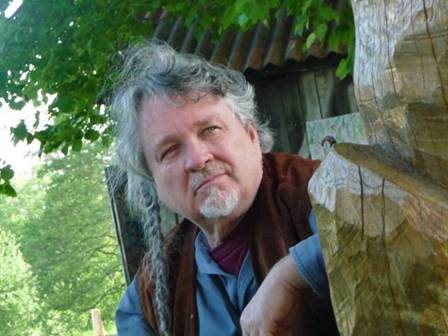
Kerry Shawn Keys
kerrykeys@yahoo.com
Kerry Shawn Keys’ roots are in the Appalachian Mountains (eastern North America). From 1998 to 2000, he taught translation theory and creative composition as a Fulbright Associate Professor at Vilnius University. He has dozens of books to his credit, including translations from Portuguese and Lithuanian, and his own poems informed by rural America and Europe, and Brazil and India (Peace Corps) where he lived for considerable time. His work ranges from theatre-dance pieces to flamenco songs to meditations on the Tao Te Ching, and is often lyrical with intense ontological concerns. Of late, he has been writing prose wonderscripts, and monologues for the stage. A children’s book, The Land of People, received a Lithuanian laureate in 2008 for artwork he co-authored. He performs with the free jazz percussionist and sound-constellation artist, Vladimir Tarasov – Prior Records released their CD in 2006. His most recent book is Transporting, a cloak of rhapsodies (2010).
- Bookmark :
- Digg
- del.icio.us
- Stumbleupon
- Redit it
Sat, 29th October, 2011 - Posted by - (0) Comment
 |
Ingrid Baronaite Hammoud, Klaipėda:
|
 |
"All things are hidden in their opposites-gain in loss, gift in refusal, honour in humiliation, wealth in poverty, strength in weakness...life in death, victory in defeat, power in powerlessness".. |
 |
"Find a way to be thankful for your troubles, and they can become your blessings." "And you learn...That you really can endure..that you really do have strength..That you really can endure.. and you learn... and you learn... and you learn....with every goodbye you learn." |
 |
"The truth is a brilliant, many-sided diamond." "We see things not as they are, but as we are.." "God turns you from one feeling to another and teaches by means of opposites so that you will have two wings to fly, not one." |
 |
"To see a world in a grain of sand and heaven in a wild flower Hold infinity in the palms of your hand and eternity in an hour.” - William Blake |
 |
"Darkness cannot drive out darkness; only light can do that. Hate cannot drive out hate; only love can do that. When the mirror shows us darkness and hate, we must shine with light and love, in all aspects of our lives.” "My religion is very simple. My religion is kindness." |
- Bookmark :
- Digg
- del.icio.us
- Stumbleupon
- Redit it
Thu, 20th October, 2011 - Posted by - (1) Comment
Vilniaus Kamerinis Teatras, October – December:
When Men Played God!
The Story of Anne Frank
A conversation with Alicia Gian, co-director of Kai žmonės vaidino Dievą!
Emily Šaras, Associate Editor
October 21, 22, 23, 28, 29. November 11, 12. December 20. 18:30
Vilniaus Kamerinis Teatras (Vilnius Chamber Theatre)
TICKETS: www.bilietai.lt
Sponsored by the United States Embassy, Vilnius
Anne Frank, the girl who has been the voice for millions of unheard voices from the Holocaust, is being heard in Vilnius for the first time in Lithuania’s history. In a newly adapted script by Mr. Marius Mačiulis, nine of Vilnius Chamber Theatre's actors will tell the story of family, hope, death and most importantly love. Co-Director of the production, Ms. Alicia Gian, hopes for the audience to be emotionally moved by the production, and seeks to inspire viewers to “be moved to action - moved to talk about and act upon social injustices that are occurring in our neighborhoods, cities, countries and world today.” In the words of Anne herself, "How wonderful it is that nobody has to wait a single moment before starting to improve the world" – and the Vilnius Chamber Theatre eagerly anticipates the October 21st premiere of the production.
- Bookmark :
- Digg
- del.icio.us
- Stumbleupon
- Redit it
Sun, 9th October, 2011 - Posted by - (1) Comment
Reflections from Dainų Šventė
“Funk and dance,
not folk song, is our life,
our lifestyle”

Breakdancer executing a one-handed spin to the song Jump
Around by House of Pain in Kalnu Parkas, Vilnius,
on the opening night of Dainų Šventė, 2009
Text: Emily Šaras
Associate Editor
It was a misty and moist afternoon in the summer of 2009, a year that celebrated Vilnius, Lithuania as a European Capital of Culture. Just as eager as I was sleep-deprived, I started my ethnomusicology research project that night by observing the opening Dainų Šventė event. My particular strain of jet lag – the seven-hour difference between Vilnius and Boston – was still a haunting presence, leading me to wander zombie-like throughout the streets of Senamiestis that evening. But even in my undead state, I was on a mission: like the hundreds of Lithuanians gathered in the city center, I had come to the opening night festivities of Dainų Šventė to hear my first taste of Lithuanian dainos (folk music) performed live. A hedgehog in the fog, I sought musical truth to clear out my haze.
- Bookmark :
- Digg
- del.icio.us
- Stumbleupon
- Redit it
VilNews e-magazine is published in Vilnius, Lithuania. Editor-in-Chief: Mr. Aage Myhre. Inquires to the editors: editor@VilNews.com.
Code of Ethics: See Section 2 – about VilNews. VilNews is not responsible for content on external links/web pages.
HOW TO ADVERTISE IN VILNEWS.
All content is copyrighted © 2011. UAB ‘VilNews’.

 Click on the buttons to open and read each of VilNews' 18 sub-sections
Click on the buttons to open and read each of VilNews' 18 sub-sections 

